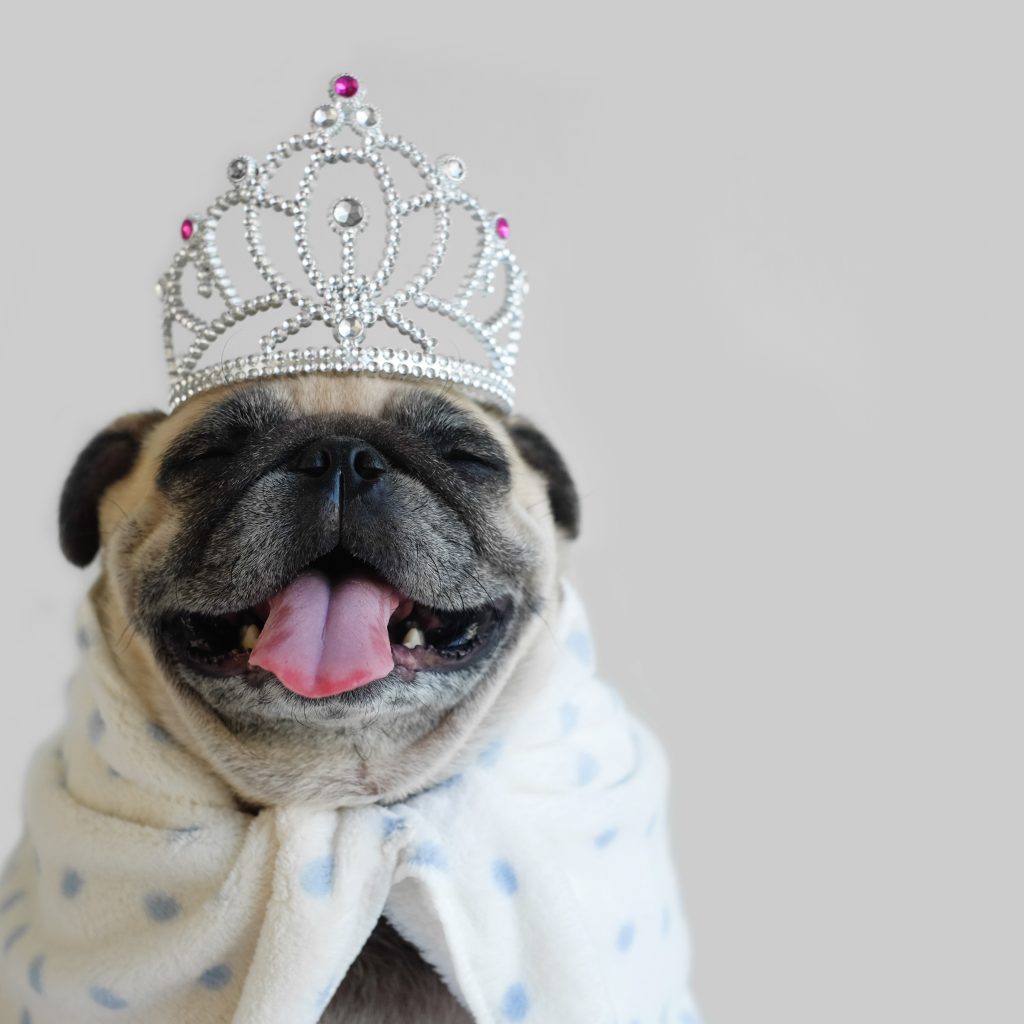The Comprehensive Pug Breed Information Guide
What’s the best dog breed ever? The Pug Breed!
You probably already know that Pugs are loving, friendly, and the perfect package. Still, let’s go over everything there is to know about the Pug breed. You want to make sure you are right for a Pug and can meet all of his needs. After all, when you own a Pug, that’s really what it’s about – meeting his needs.
Don’t worry! I have heard that a Pug loves his family first, and secondly loves his food.
Not sure about that. Some days it feels like it’s the other way around! But hey, let’s go with it, so we all feel better.
What’s the purpose of the Pug breed?
Modern-day families mostly have dogs for companionship.
People used to buy dogs for hunting, guarding, and herding. In the past, dogs served a purpose and contributed to the family.
Pointers and Irish Setters were for hunting.
Basset Hounds were also hunting breeds best for sniffing out animals. Originally, Dachshunds were bred for hunting small animals.
Herding dogs help on the farm. These are Collies, Australian Shepherds, and Australian Cattle Dogs are herding dogs.
Other dogs are livestock guardian dogs.
Dogs such as Great Pyrenees and Maremmas were given the job or watching herds of sheep. Without these useful dogs, you could lose everything in one night to predators.
German Shepherds, Rottweilers, and Doberman Pinschers are guard dogs for the family. And unfortunately, some breeds in the past, like Bull Terriers, were bred for the dog fights.
But what was the Pug bred for? I can’t see them being an asset out hunting, herding, or guarding anything other than their food bowl.
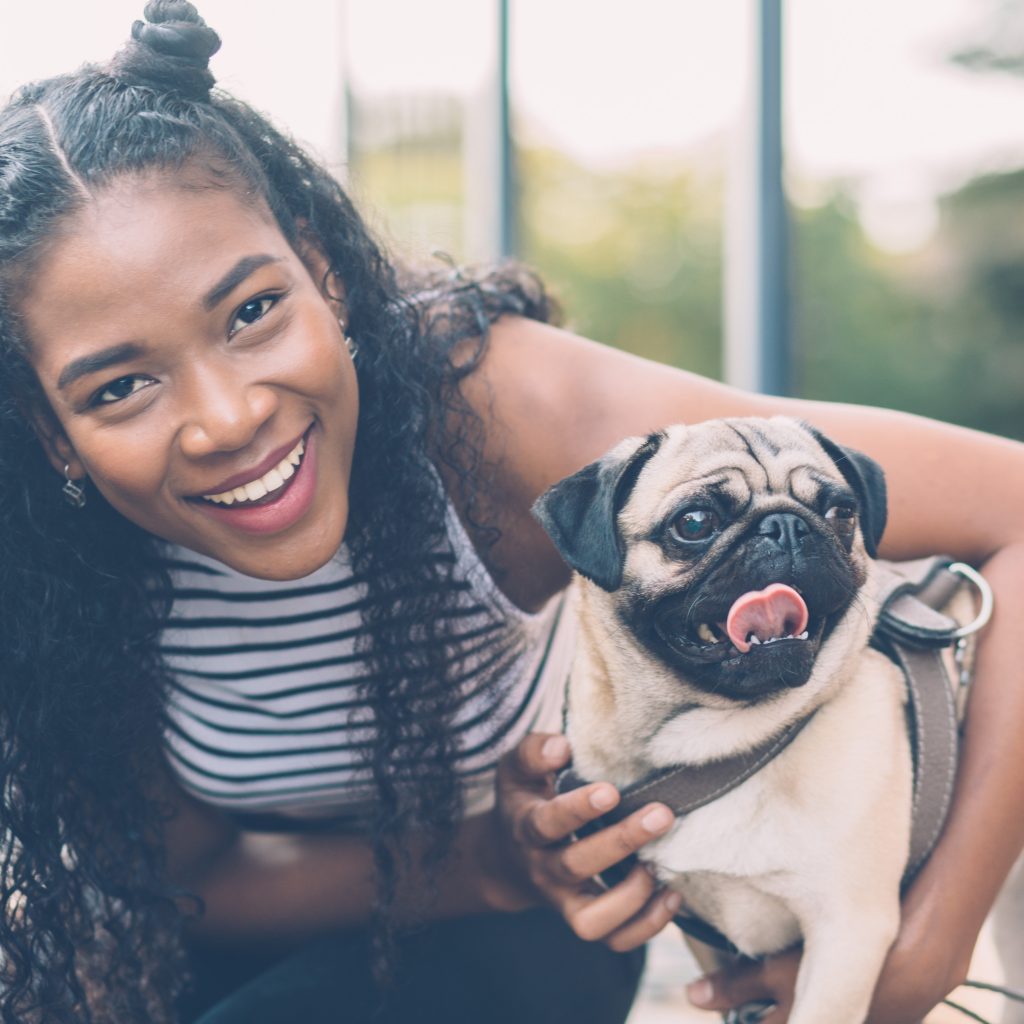
Pugs were one of the few dogs that were bred for companionship. They’re cheerful, friendly, and make for great emotional support animals. You are their focus. They want to be with you 24/7, on your lap, and involved in everything you do.
Today they are called companion dogs.
Due to economic struggles in the past, a dog had to contribute to the family. Even today, in impoverished countries today, people do not have dogs as pets.
So, who did own these dogs, and why has the Pug breed survived? It was the Emperors, Kings, Queens, and the wealthy who owned Pugs.
The Pug? The Pug will be planted on his owner’s lap. The owner or Pug parent will feel too guilty to move and disturb their little Puggy. Why?
Because Pugs were bred for Kings and Queens, they were also treated like royalty. Today, they won’t let you forget it!

Pug Breed History
Companions to royalty were the Pug’s first role, and they did it well. The Chinese aristocratic families owned Pugs and gave them away as precious gifts. The Pug breed began in China during the first century B.C. Soldiers, guards, and servants guarded these royal Pug dogs.
The purpose of Pugs was companionship for the ruling families.
Later, Pugs spread to other parts of Asian. Buddhist monks in Tibet kept these Pugs as pets in their monasteries.
Some historians believe that the “Food Dogs” of China were statues of Pugs at that time. In addition to Tibet, Pug-like looking dogs were found in Japan.
When China began trading with Europe in the late 1500s, the Pugs went with the Dutch Traders. They called them Mopshonds, which is a name that is still used today.
Europe
The first European country to see Pugs was Holland. At the House of Orange, their Pugs were outfitted in orange ribbons. This happened after 1572. At this time, a Pug named Pompey saved the life of the Prince of Orange by alerting him to the assassins’ approach.
Pugs were well-loved in Europe. Marie Antoinette, a Duke and Duchess of Windsor, Queen Victoria, and Napoleon’s wife, Josephine Bonaparte, all owned Pugs.
In 1860 the British overtook the Chinese Imperial Palace.
They found several Pugs and Pekingese, and the dogs were brought back to England with them.
Pugs became very popular in Europe in the 18th century. There are many paintings and journal articles from this time, including Pugs. The Pug breed popularity was taking place in England, Italy, and France.
Over the years, the Pug breed’s physical characteristics have changed. Breeders selected desirable traits. The paintings of the 18th and 19th centuries showed a different Pug breed. Pugs had longer noses, longer legs, and sometimes cropped ears.
British aristocrat, Lady Brassey, brought black Pugs back from China in 1886. The black Pug grew in popularity.
Pugs were popular in the Victorian era. They were found in figurines, paintings, and postcards, and figurines. Often, they wore wide, decorative collars or large bows around their short necks.
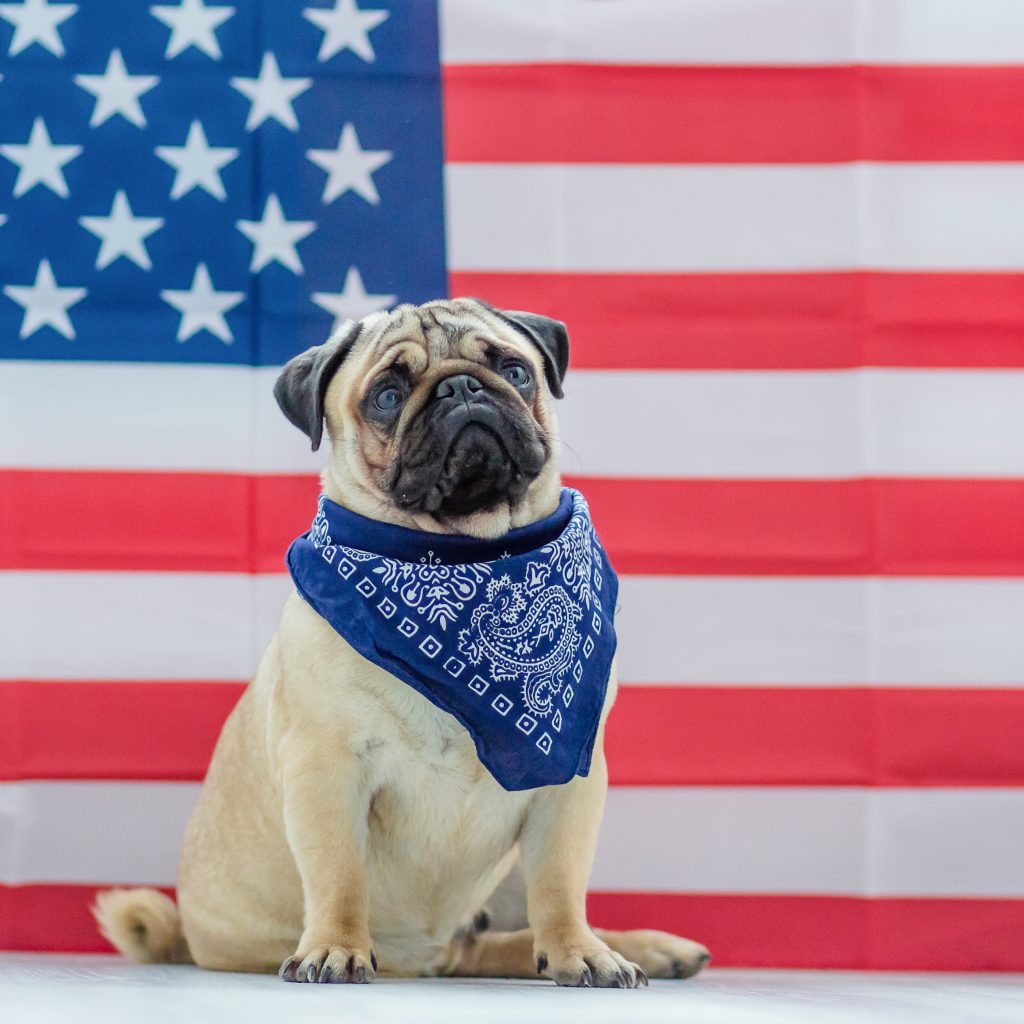
United States
Pugs came to the United States during the nineteenth century. They quickly made their way into the family home and the show ring. In 1885, the American Kennel Club recognized the Pug breed. The Dog Club of America recognized the Pug Breed. The Pug breed dog was recognized by the American Kennel Club in 1931 also.
Pug’s main job is companionship, and they take it seriously. They love to charm people, whether a commoner or royalty. Over the years, many famous and wealthy people have been Pug owners.
Some modern-day Pug owners include:
- Robin Williams – Comedian and Actor
- Jessica Alba – Acress and Model
- Paris Hilton – American Media Personality
- Paula Abdul – Singer-songwriter
- Dennis Quaid – American Actor
- Billy Joel – Singer-songwriter
- Amber Rose – American Model, T.V. Personality
- Andy Warhol – Artist
- Brooke Mueller – Actress
- Nick Carter – Singer of the Backstreet Boys
- George Clooney – Actor, Film Director
Today the Pug breed ranks the 28th most popular breed in the United States.
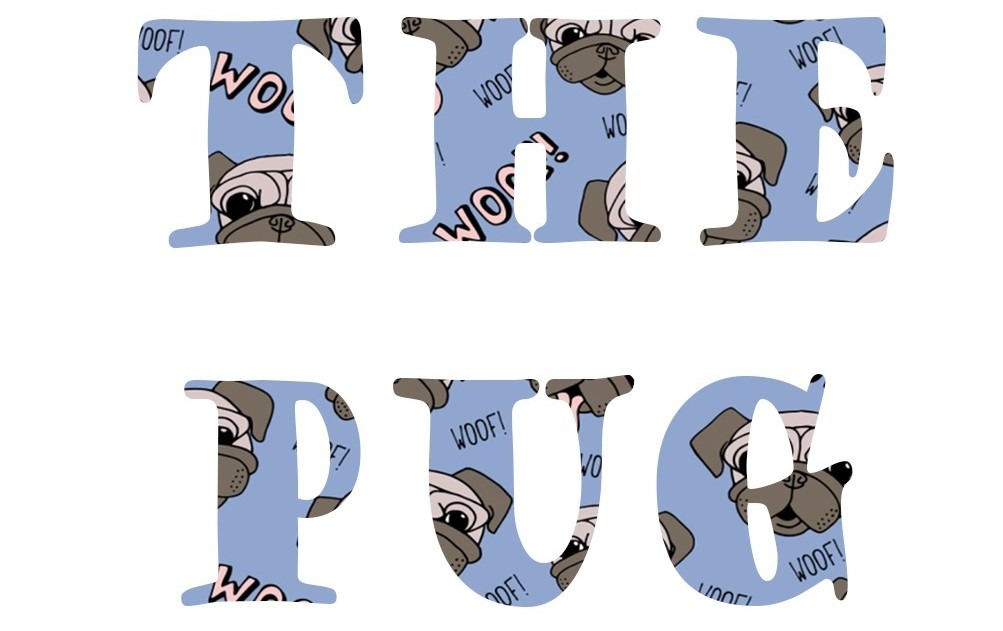
How did this adorable breed come to be known as the Pug?
There are various answers to this question. Some or all may be true. Perhaps the name Pug for the breed has grown over time.
The word Pug first appeared in the English language in 1566. Initially, the word Pug meant “little cutie” and used when referring to a person. Later in the mid-1600s, the word Pug meant sprite (fairy), imp, monkey, or demon!
In 1731 the word “pug” was defined in a dictionary as a nickname for a monkey or dog.
It was not until the mid-1700s did the word Pug mean “dwarf breed of dog,” as defined in the Oxford English Dictionary.
A popular theory suggests that the Pug breed was also called Pug Monkeys. Around the early 1700s, the Marmoset monkeys were trendy pets. They had faces similar to Pugs.
In 1731, the word Pug was defined as a monkey or dog, according to the dictionary.
Another theory is that the word Pug comes from the Latin phrase pugnus, meaning fist.
Some thought the shape of the Pug’s face looked like a fist. The wrinkles of the Pug breed help the head to look like a clenched fist.
Only in the 1750s did the Oxford English Dictionary recognize the word Pug as meaning a “dwarf breed of dog.”
So many theories. What we do know is the name “Pug” is perfect for our dogs.
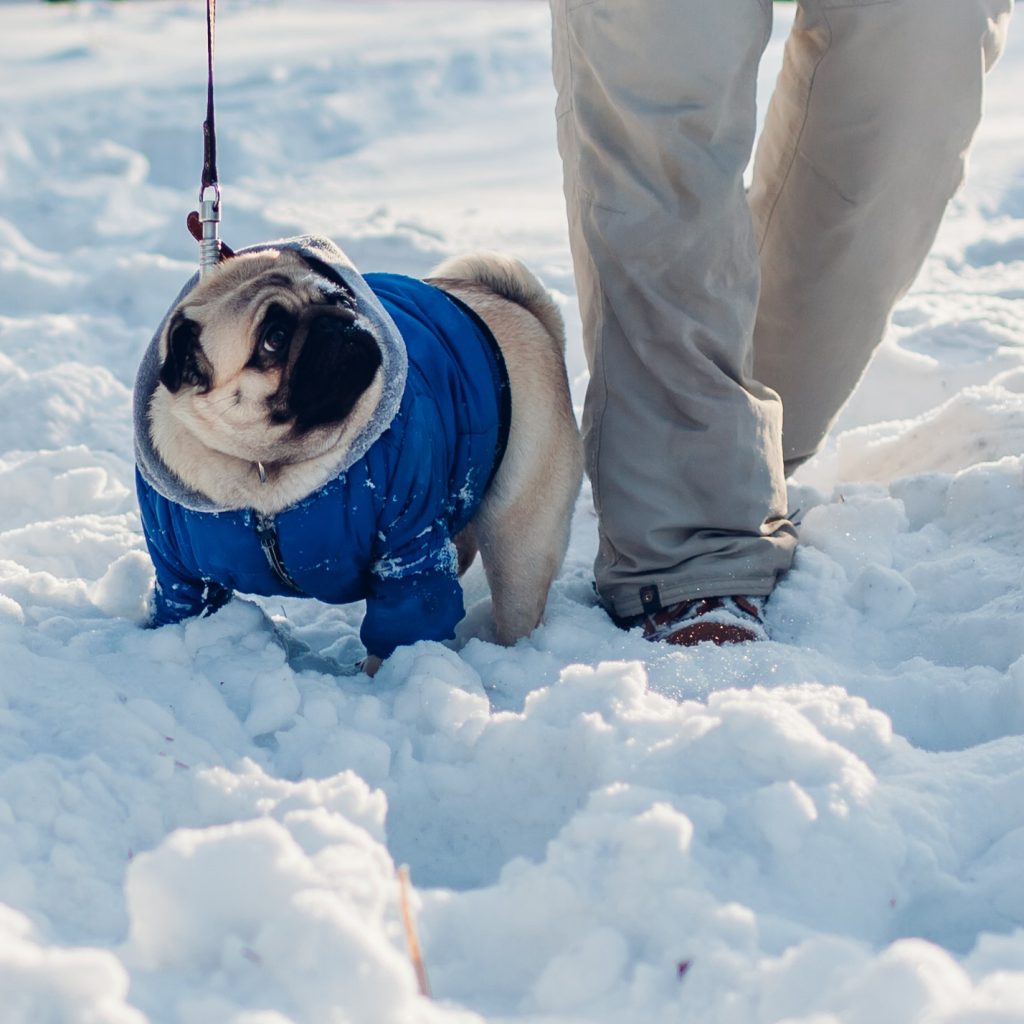
Pug Breed Adaptability
Adaptability means the ability to adjust to different conditions. For the Pug breed, it depends on what those different situations are.
How adaptable is the Pug extreme temperatures?
Poor. Because of Pug’s noses and limited breathing capability, they do not do well on long walks in the heat. Watch your Pug’s breathing while on walks, especially if it is over 75 degrees outside. Their limited breathing capacity makes it more challenging to cool down. Other than black Pugs, all Pugs have double coats making them more vulnerable to heat.
So, does that mean that Pugs tolerate cold weather well?
My answer is no. Of course, Pugs are not the type of dogs left outside for extended periods. Anything under 40 degrees and I make sure my Pugs go out, do their business, and come right back in.
What about walks?
Again, be careful with anything under 40 degrees. It’s a good idea to get jackets or sweaters for your Pugs if you’re planning on taking them out. Unfortunately, for me, my Pugs look great in their jackets but will not move once they are on.
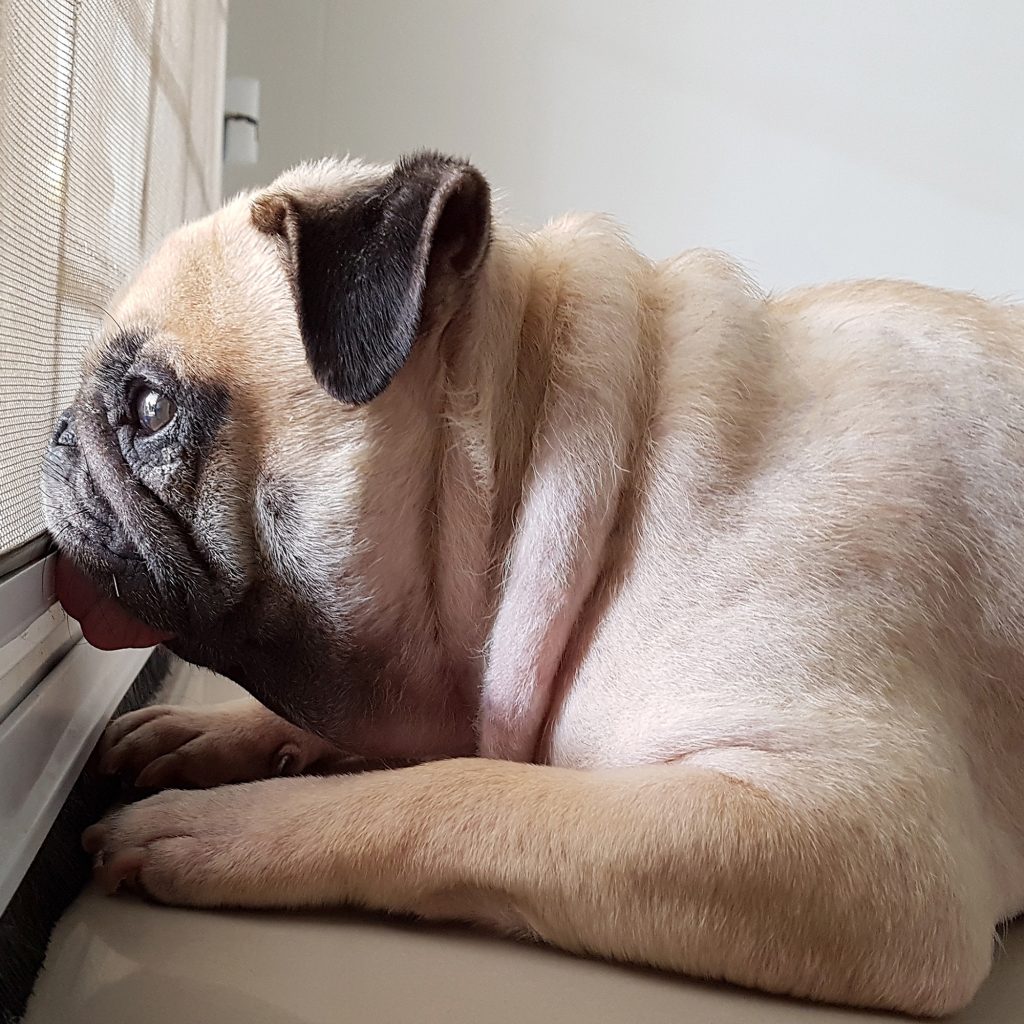
How do Pugs do when they are left alone?
Pugs are part of the family.
If you’re not sure about that, don’t worry, they will remind you of this fact daily. The Pug breed is less destructive than other breeds, but that doesn’t mean that they get bored or lonely. Pug people often have more than one Pug. An apparent reason is the Pug breed extreme perfection, but it also helps to keep the other company.
So, if Pugs are such great dogs, when do they adapt well?
Pugs are great for apartment living. All small dogs are not suited for apartment life.
Small dogs such as Terriers, Beagles, or Miniature Pinschers, have a lot of energy. It’s best to have a house with a yard for these high-energy dogs.
The Pug Breed dogs tend to be low energy, calm, and less yappy than other small dogs. Pug dogs are well-suited for apartment life. Take your Pug out several times a day to go to the bathroom. A brisk walk in the morning and one in the evening will meet most of their exercise needs.
You don’t need a massive space since the desired place to be is right on your lap.
“I’m Not an Experienced Pet Parent, is the Pug Breed Right for Me?”
Pugs are good for dog owner noobs. Some dogs are more comfortable than others. They are easy-going, easy to train, and do well with inconsistencies.
If this is the first time you’re going to become a dog parent, an independent or assertive dog may not be for you. The Pug breed is eager to please their owners. This helps with training. Train with treats. The Pug breed is emotionally sensitive, so no harsh words or yelling. You may scare your Pug or hurt his feelings. Also, it does not help him to learn.
Look at the Pug Breed when thinking of getting a dog. Determine if the Pug is a match for your lifestyle. If you work 50 hours a week and go to the gym every day after work, it would not be a good idea to become a Pug parent.
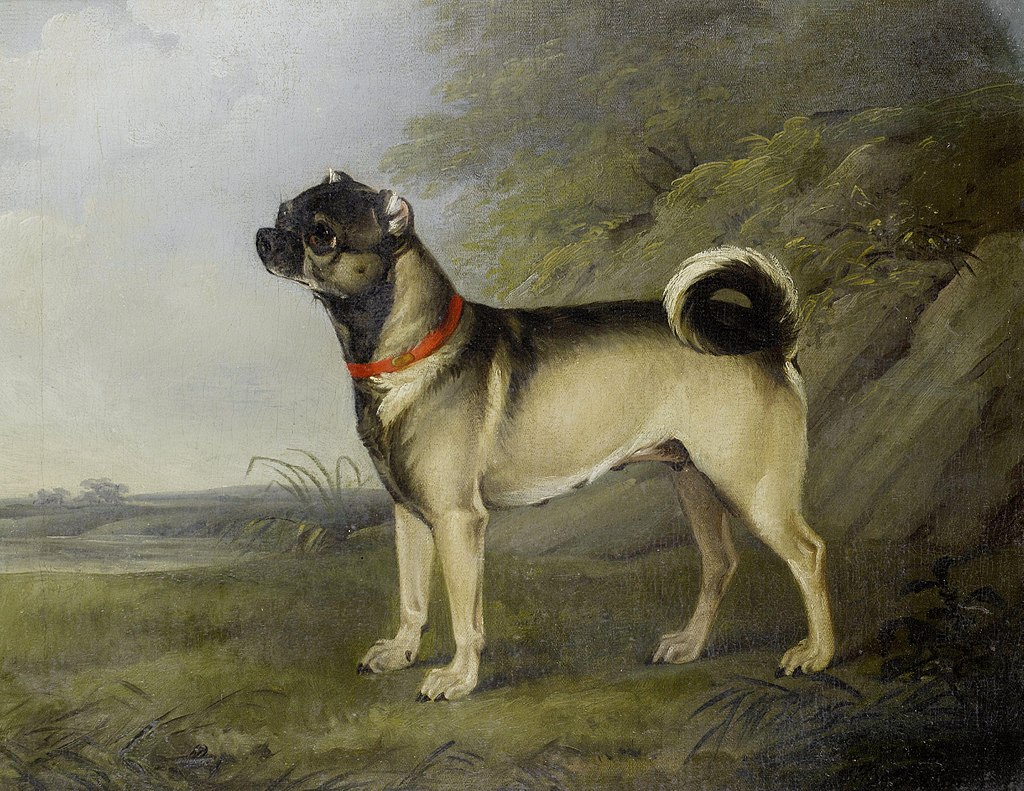
Physical Characteristics
While the Pugs breed was long and lean in the eighteenth century, things have changed. Pug breeds have square, compact bodies, deep chests, and well-developed muscles.
Rather than just fawn and black of the past, the Pug breed includes apricot, silver, white, and brindle.
The markings are clearly defined, and a black line or trace is running down their back. The tail of Pugs curls typically tightly.
Pug breed dogs generally have folded ears that against the side of their heads. Ears tend to be black and soft.
Legs are strong, straight, and a moderate length to hold the Pug sturdy. The feet are small, but the ankles are strong. The preference is for black toenails.
Pug heads and eyes are large and round, with large. Wrinkles on their faces are distinct and deep. Pugs with deep wrinkles will often have a deep wrinkle on his forehead. This wrinkle seems to form the word “Prince” in Chinese. It is also called a “thumb mark.”
Pugs have small black moles on their cheeks called “beauty spots.” The Pug has a black mask or muzzle. The Pug breed has an undershot jaw. This means the lower teeth extend slightly beyond the upper teeth.
Height: Males 12 – 14 inches (30 – 36 cm) Females 10 – 12 inches (25 – 30 cm)
Weight: Males 13 – 20 pounds (6 – 9 kg) Females 13 – 18 pounds (6 – 8 kg)
Pugs live from about 12 to 15 years old.
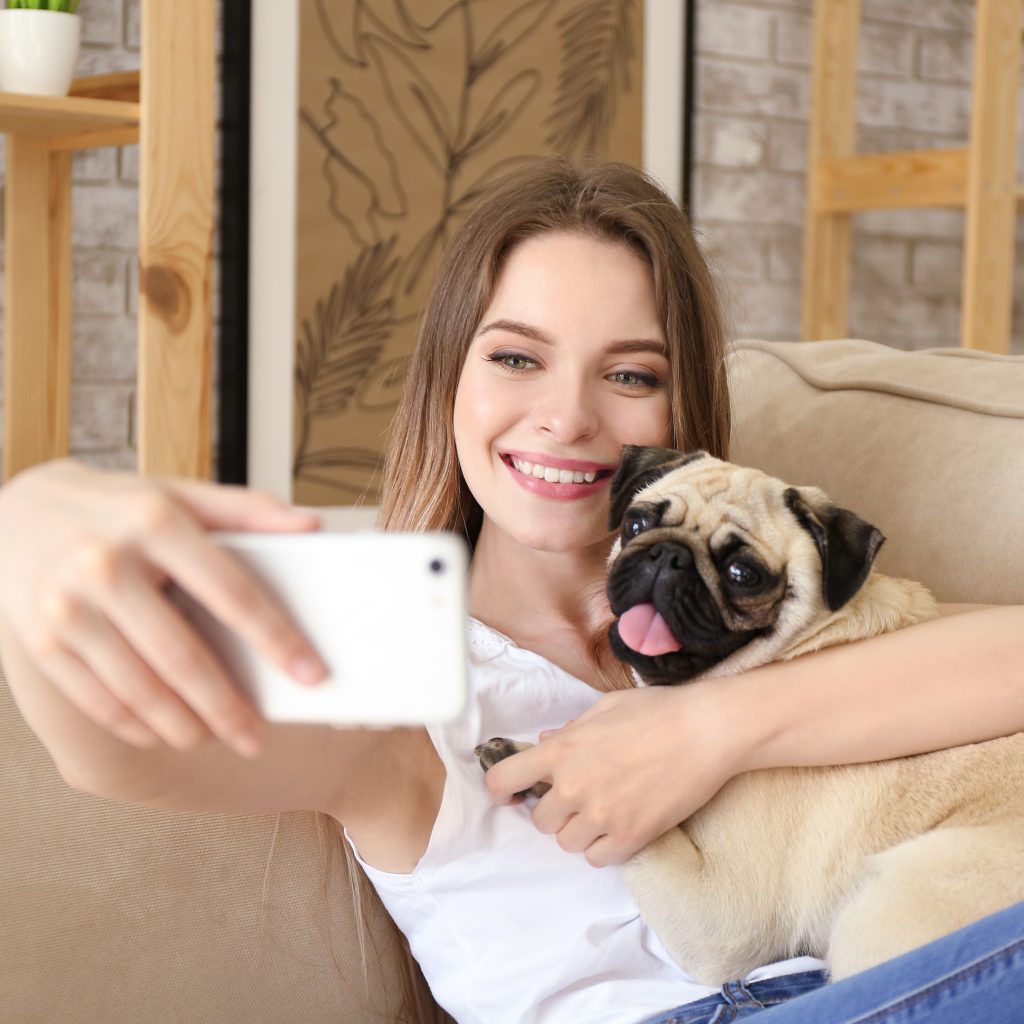
Pug Breed Personality and Temperament
As stated in the introduction, Pugs are bred to be companions. They’re really good at it. They want to be on your lap and often look for affection. They are devoted to you 100%, and you had better be devoted to them 110%. If you’re not holding up your end of the deal, they will let you know. They’ll lie on your computer keyboard while you’re trying to work. Or they’ll position themselves between you and your new boyfriend.
Pugs are happiest when on your lap and maybe getting some popcorn on movie night. But Pugs are not all slumber and no play. The Pug breed is a playful breed that loves to be the clown and entertain his parents with silly tricks.
Overall, Pugs have excellent temperaments. It is a breeding characteristic that breeders want to pass along. They know people buy Pugs for affection and fun.
Even with their positive disposition, it is always a good idea to socialize your Pug early on. They need to be around different people, sights, and have different experiences. This adds to them being well-rounded and likable dogs.
Some say that Pugs are stubborn, but generally, they want to please others. Anyhow, with your 110% devotion to them, stubbornness shouldn’t be a problem!
The Pug breed is pretty laid-back. They don’t bark, chew, or dig excessively.
And Pugs love to play.
Generally, the Pug breed is fond of children.
The Pug breed is highly intelligent. Keep variety in the training topics, otherwise, they may get bored. They use their intelligence for your entertainment.
It is more of a dry sense of humor. You’ll know it when you see it.
Pugs get along with others and are sturdy enough to get along with children. They tolerate most everything a child can dish out. You still want to teach your children how to respect and behave around Pugs. But that one accidental ear pulling is probably not going to end with anyone getting bitten.
Pugs are an affectionate family member. They’re friendly with other dogs, people in general, and especially kids. They’re super friendly with houseguests.
Monitor the situation. Houseguests may not love the rambunctiousness of the Pug breed.
Pug Training
The Pug breed’s primary goal is to be the family’s companion. He has an excellent temperament and an outgoing, loving disposition. Pugs live to please their owners, so training is training is generally easy. Sometimes their feelings are easily hurt. Don’t engage in harsh training methods or a loud voice.
Social early and consider puppy training classes.
Use treats for training. The Pug breed dog is extremely food driven.
Treats and praise are great positive-reinforcement to be used for training. Keep the sessions short and fun. Keep the treats small and watch their weight.
These little toy dogs love to be the center of attention.
Teaching them a few simple tricks is an excellent way for them to show off when your friends come over. Also, it keeps their brains busy.
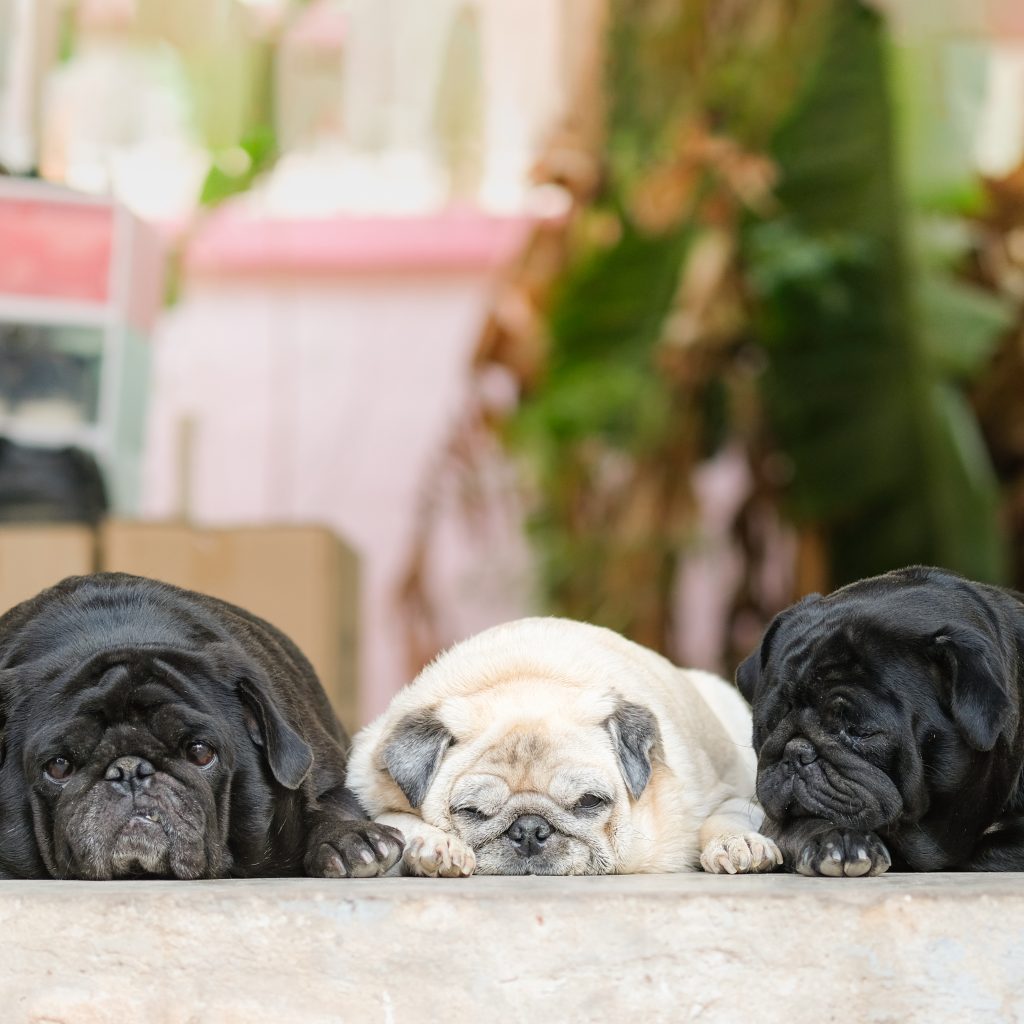
Pug Health
Pug dogs are generally healthy. All breeds have certain health conditions. It’s good to be aware, although the likelihood is low, your Pug will ever encounter any of these diseases.
Here are some conditions the Pug breed is susceptible to:
Pug Weight Problems
One of the most critical factors in your Pug’s life is proper diet and weight. Fortunately, this is the one thing you can control in your Pug’s life.
How many people do you know that are overweight and have a host of other problems? These problems include joint pains, arthritis, high blood pressure, heart problems, and diabetes. The same is true for the Pug breed. One of the main factors that will shorten your Pug’s life is obesity.
Pug breed dogs quickly put on the pounds. They are prone to becoming overweight and tend to lead a somewhat sedentary lifestyle.
You may feel like you just can’t resist their cute little faces, and you give them a piece of your sandwich. The great thing about the Pug breed dog is that you can give them a green bean and be just as happy. They are absolute chowhounds and not picky about what you give them.
Pug Breathing Problems
The Pug breed is known for having Brachycephalic Syndrome.
This is common in breeds with short heads. Due to the structure of their heads, it can lead to breathing problems. Surgery is available if your Pug has severe pain.
Talk to your Veterinarian if your Pug has serious breathing difficulties.
The Pug breed is prone to “reverse sneezing.”
This is when they gasp for air and start snorting. Another name for this is the pharyngeal gag reflex. These episodes are generally not harmful and may be stopped by massaging the Pug’s throat.
The Pug breed dogs sometimes have pinched nostrils, also known as stenotic nares. These pinched nostrils can make breathing more difficult.
If pinched nostrils labor your Pug’s breathing, talk to your Veterinarian.
The Pug breed, like all breeds, regulate their temperature through evaporation by panting. The Pug breed dog may have a facial structure that makes this difficult. If your Pug can not cool themselves, this could become a serious health issue. Talk to your Veterinarian if this is a concern.
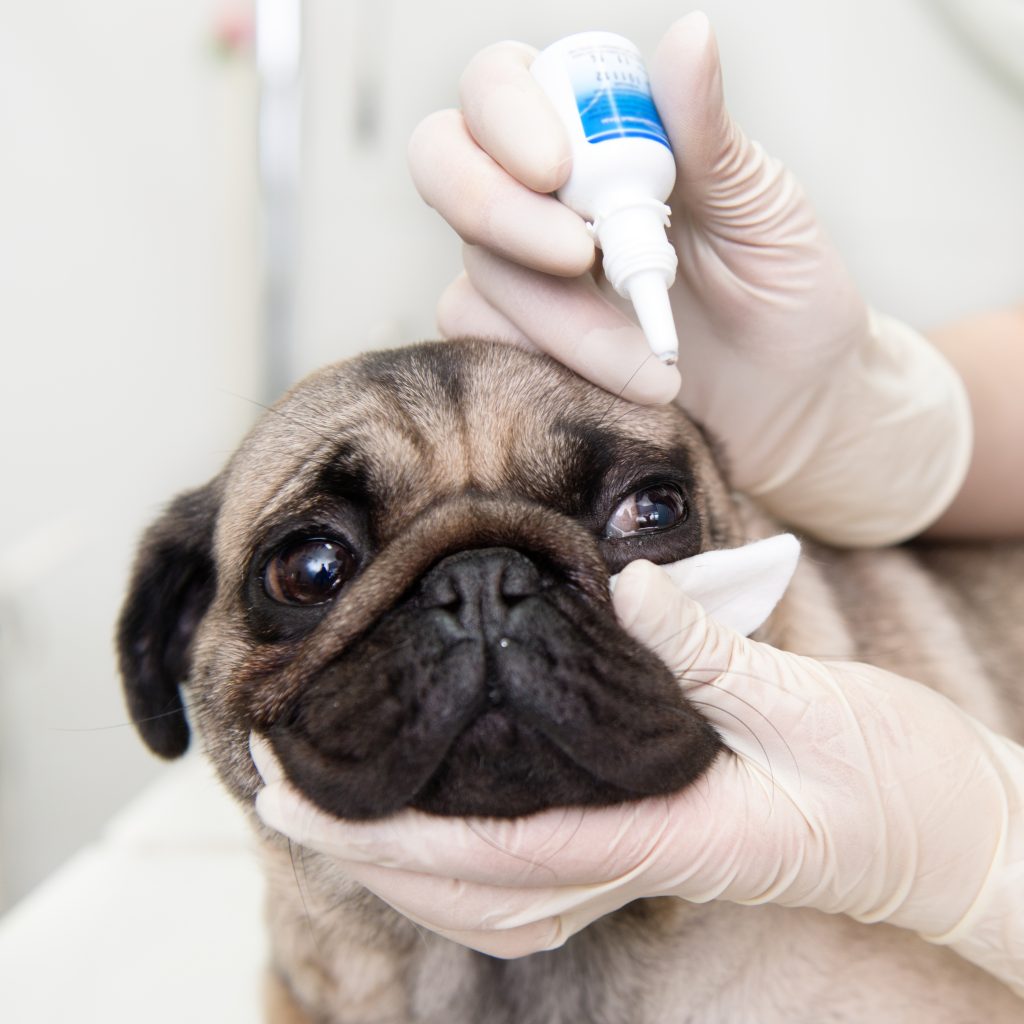
Pug Eyes
The Pug breed has dark, babyface eyes that we all love. We love those big eyes that protrude a little further than most dogs do. They are also vulnerable due to their position and size.
Some eye problems the Pug breed are susceptible to are:
- Corneal ulcers
- Scratched corneals
- Keratitis
- Cherry eye
- Dry eye
- Eye prolapses
Skin
The Pug breed is known for skin problems. Keep the wrinkles clean, and you will not see many of these problems. The folds around the nose, eyes, and other places can cause irritation and infection.
The Pug breed is known for being susceptible to mast cell tumors. Early detection is the key. Take your Pug into the Veterinarian immediately if you notice any bumps that should not be there. If there is a tumor, have it removed early. If it is cancerous, removing it early will reduce the chances of having on-going problems.
Heart Disease
Some small dog breeds get Mitral valve disease, including the Pug breed. Find out before you purchase a Pug if the parents have any signs of heart disease. A reputable breeder will not breed a Pug with health issues, including heart disease.
Hip Dysplasia
Hip dysplasia is a painful hip problem that causes difficulty in walking and arthritis. The first thing you and I always want to do is keep our Pugs at an ideal weight. If the problem persists, consult with your Veterinarian and see what she recommends.
Pug Dog Encephalitis
The Pug breed is prone to PDE or Pug Dog Encephalitis. PDE is an inflammation of the brain and strikes adolescent Pugs around ages 2 or 3 years old. Genetic tests are available to test breeding dogs to see if they are carriers of PDE.
Ask your breeder if she has results for these tests.
Estimates suggest that 1% of Pugs will die from this disease. I have never met anyone that has talked about having a Pug with this disease.
Pug Care
The Pug breed is a low-maintenance companion dog. As stated earlier, they do have some health problems, but the Pugs I have had have been overall healthy.
They are playful and rambunctious enough for families with children. They are also good for older owners who want a dog that will get them out of the house a couple of times per day for a short walk. They’re a good match for apartment dwellers as they don’t need a big space and are happy to spend their days on your lap.
If you’re a light sleeper, get some earplugs. They are prone to snoring. If you plan on sleeping in a dog-free bed, consider another breed. You won’t be able to resist their sweet little faces at bedtime once they are potty-trained.
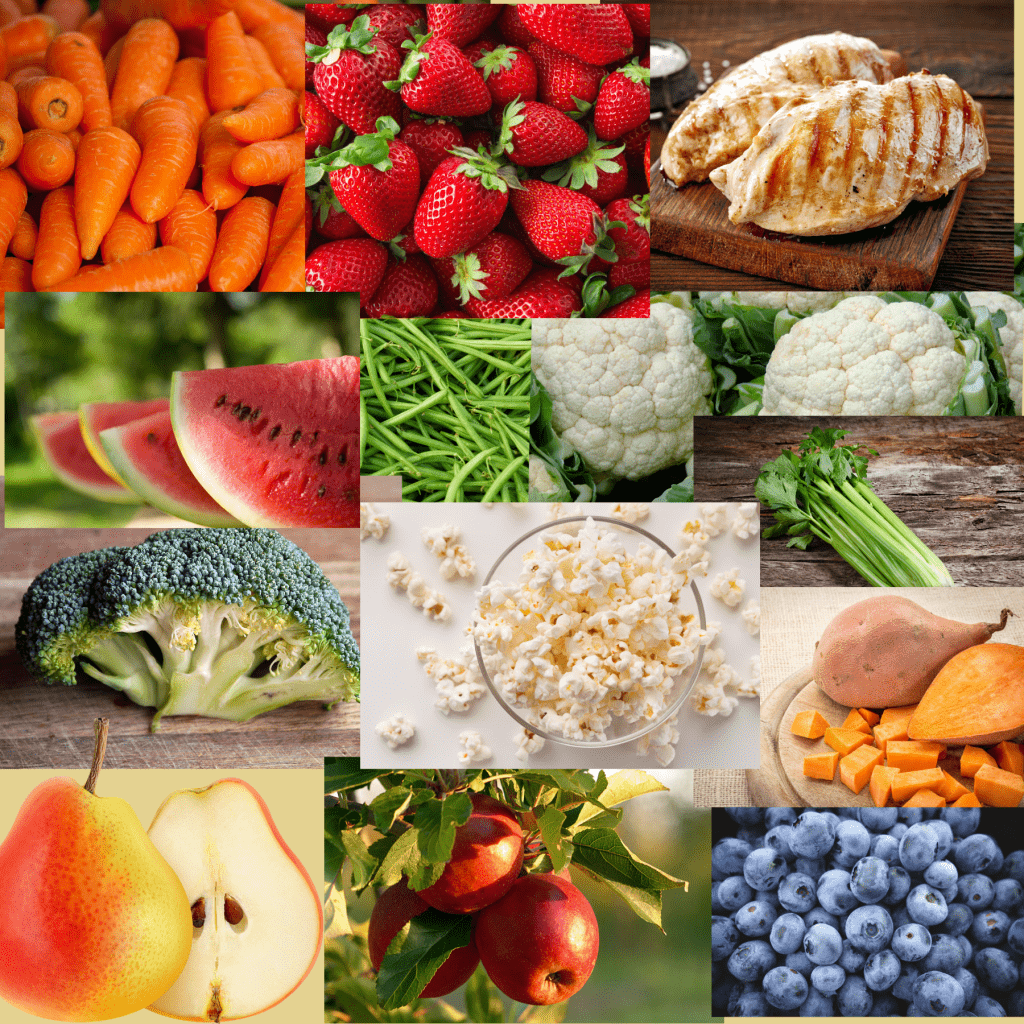
Feeding
The Pug breed is prone to obesity. Keep your Pug on high-quality dog food that does not contain a bunch of fillers.
Feed your Pug ½ to 1 cup twice per day of dry food. Watch his weight to determine how much to feed. If you are feeding treats throughout the day, be sure to reduce his meal intake.
I even set aside food from my Pug’s meals to use during training time.
I find they love their training and don’t need high-calorie treats as other breeds do.
If your Pug is a couch potato, watch his weight, and feed accordingly.
Pugs love to eat. Store-bought packaged treats may be high in calories.
Try these low-calorie, healthy snacks:
- Apples
- Green beans
- Carrots
- Watermelon
- Strawberries
- Bananas
- Broccoli
- Blueberries
- Cabbage
- Cauliflower
- Apples
- Celery
- Pumpkin
- Pears
- Sweet Potatoes
- Pumpkin
- Salmon
- Chicken
- Popcorn – Air popped, No Salt or Butter
Show restraint and do not over-indulge him with treats. Yet, if you can not resist the temptation, fruits and vegetables are first for the Pug breed. Cupcakes, bites of your sandwich or dinner will pack on the pounds. We all know how hard it is to take the extra weight off. The same is true for the Pug breed.
Exercise
The Pug is known as a couch Pugtato, but they need their exercise. Many Pugs will be a Pugtato one minute and zooming around the house the next.
Even as the Pug dog gets older, they still need their exercise.
The Pug breed is unlike other breeds who need long and fast walks. The Pug breed dog needs a couple of walks per day. The Pug breed is strong, and they have short, strong legs. However, if the weather is unfavorable, play an indoor game. Pugs are generally entertained with chasing their favorite toy down the hallway.
Take a 10-minute walk 3 or 4 times per day rather than two long ones, if the weather is too cold, hot, or humid. They probably won’t win any agility contests, but it is fun to practice over a broomstick in the kitchen. If you have a pool, buy a dog life vest (an absolute must for Pugs) and take him for a short swim on a hot summer day.
Whatever you decide to do, keep it fun and keep your Pug breed dog physically active.
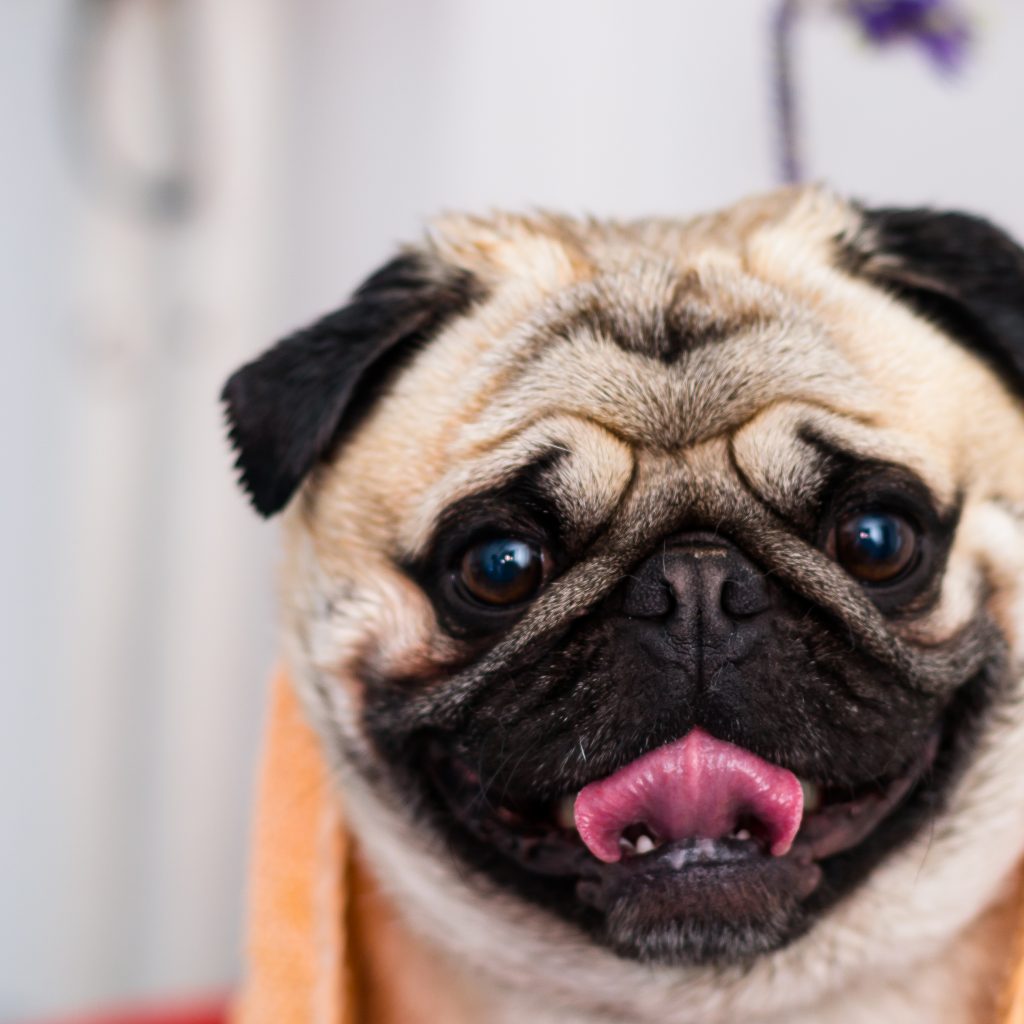
Grooming
The Pug breed has a short and smooth coat. The short coat makes it easy to keep your Pug well-groomed.
Brush your Pug breed dog often. Create a daily habit of Pug brushing, and it will reduce your house cleaning time. Pugs have double coats, except black Pugs. They shed all year long. Even my black Pug, with one coat, puts out enough fur to start her own Pug hair factory.
Obviously, the Pug breed’s size indicates that it’s not going to take long to brush them but do it daily. You’ll be happier. Your Pug hair cleaning will be significantly reduced.
What about bathing the Pug breed dog?
Because of potential skin problems, it is not a good idea to bath your Pug more than once every two weeks.
Bathe enough to keep the creases cleaned, remove excess hair, and get rid of the doggy odor. Each Pug is different, but I find that once per month does the trick.
Between baths, be sure to keep those creases clean.
Your Pug can suffer from skin irritation and infection if dirt and debris set in. After bathing or wrinkle cleaning, be sure to dry out those skin folds.
Keep your Pug’s nails trimmed. Overly long nails can be uncomfortable for him. They aren’t as active as other breeds, so their nails don’t get worn down on long walks.
Don’t forget to check the ears for Puggy gunk or yeast infection.
The Pug breed may have teeth problems as their teeth are sometimes not as straight as we would like them to be. Due to the Pug breed’s skull shape, some teeth will be very far apart, while others will be very close together. Keep them brushed regularly. Try to get that into your daily schedule. Your Pugs will balk less and less the more they get used to it. Talk to your Veterinarian if teeth are too close together, and you can’t clean properly. A baby tooth my remain after the adult teeth come out.
Make grooming a positive experience. Keep healthy treats on hand and praise your Pug breed dog throughout the process.
Coat Color
Many years ago, when I purchased my first two Pugs, they were fawn. At that time, fawn was the only color available to me. Over time, the Pug breed has developed into a variety of color options.
Here are the colors and how common or uncommon they are:
- Fawn – 70%
- Black – 22%
- Apricot – 4%
- Silver – 3%
- Brindle – 1%
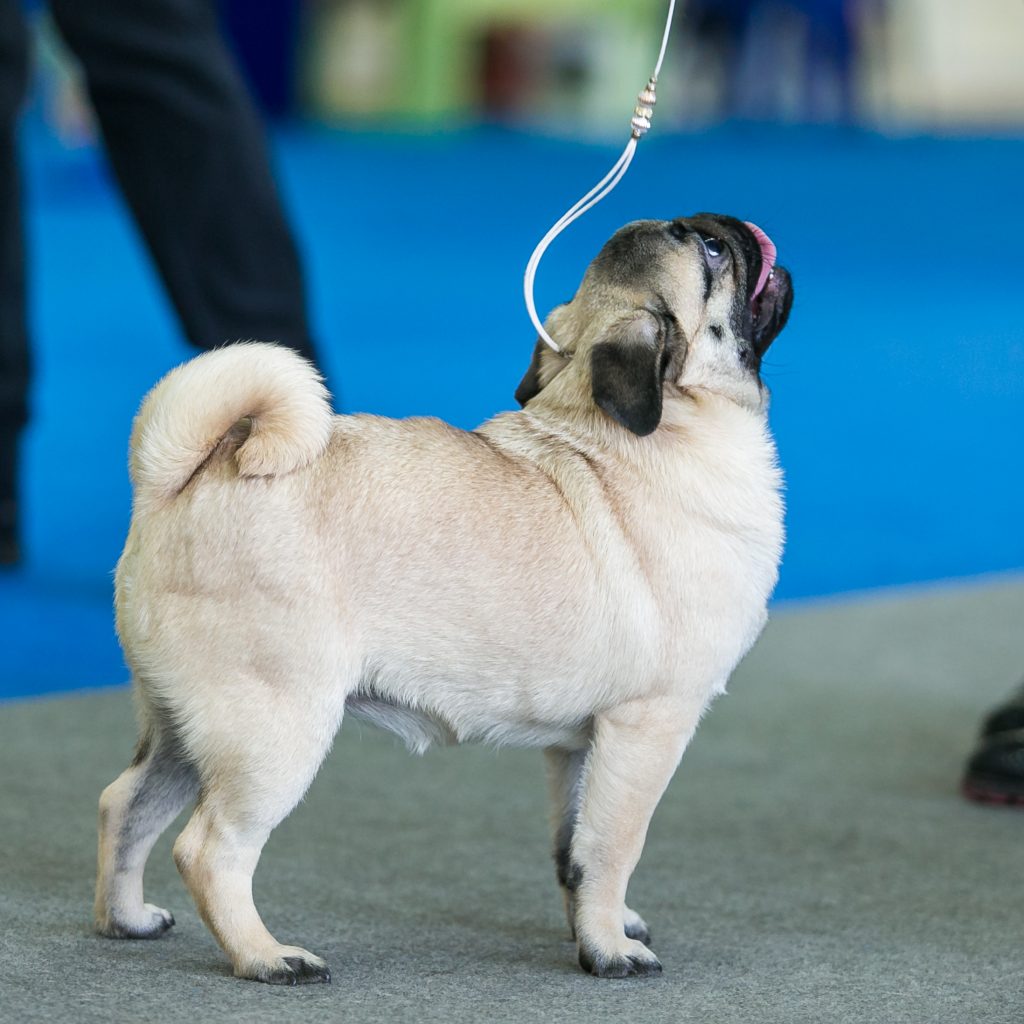
AKC Pug Breed Standard
What do You Need to Know if You want a Pug that Qualifies for the Pug Breed Standard?
If you are interested in showing your Pug dog in an AKC show, they must meet the Breed Standard. Both parents of your Pug breed dogs must be purebred and registered with the AKC. Your Pug must also be registered with the AKC and meet the AKC Pug Breed Standard. I have a registered, purebred brindle Pug with the AKC. My brindle Pug can not enter shows with the AKC due to her color.
General Appearance: The general appearance of a Pug breed dog is square and compact. If your Pug is a lean machine with longish legs, he’s not going to meet the Pug breed standard.
Size, Proportion, Substance: Multum in parvo is the phrase often used to describe Pugs. Directly from the Latin, it means “much in a little.”
Pugs should be condensed and have well-developed muscles.
Weight: Pugs should weigh 14 to 18 pounds. Once again, the square look is the best for the Pug breed.
Head: The head is large and round. Dark, large, round, bold, and prominent are the best to meet the Pug Breed standard. The Pug’s expression should be soft, and they often have a “worried-look.” When Pugs are excited, their expression is full of fire.
Pug ears are soft, thin, and small.
Their ears remind you of black velvet.
Wrinkles should be large and deep. Pugs that best meet the Pug breed standard have blunt, square, and short muzzles.
Bite – The lower teeth or lower jaw project out beyond the upper when the mouth is closed.
They have a slight undershot.
Neck, Topline, Body: The neck is strong, thick, and long enough to carry the head proudly. The short back is level, and the body is short and square. The chest is broad. The tail is tight, close to the hip and a double curl is even better.
Forequarters: Legs should be strong and straight. Leg length should be moderate, not too long or too short. The legs help to give the look of a sturdy package. Elbows are under the shoulder blades. The feet are neither long nor round. Toes are well split, and nails should be black. Dewclaws are often removed.
Hindquarters: The Pug has strong and powerful hindquarters.
They have a moderate bend, and their hocks are short. The thighs and buttocks are muscular.
Coat: The best coat to meet the Pug breed standard is short, soft, smooth, and glossy.
Color: To meet the Pug breed standard, the coat color must be either fawn or black.
Markings: Pug markings are clearly defined. The better defined and more intense the markings are, the better. The mask and ears of a Pug breed dog should be black. They should have a diamond on the forehead, also known as a or thumb mark. The black line or trace on the back and even the face’s moles should be very black.
Gait: There should be no weakness in the gate. Paws should land squarely with the toes straight ahead. Rear steps are strong and follow in line with the front. The gate is self-assured and lively.
Temperament: Pugs are an even-tempered breed. They are playful, charming, outgoing, and have dignity. They have a loving disposition, which is great if you have children.
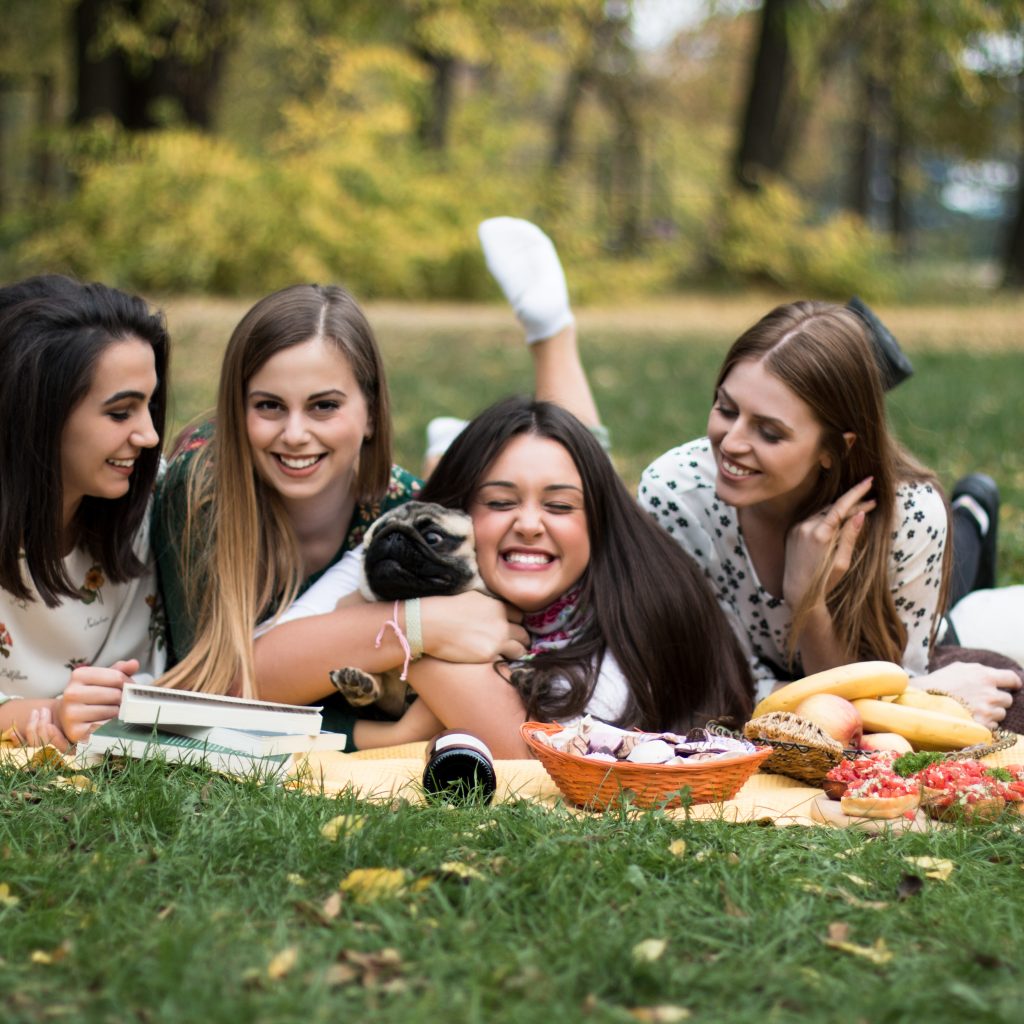
Conclusion
The Pug breed is an excellent breed of dog. They are friendly, fun, and low-maintenance. Pug breed dogs are great families, singles, older adults, and people that live in apartments.
If you’re looking for a cuddly family member, the Pug breed is right for you. I’ve never heard anyone complain about a Pug breed dog’s temperament.
They are not just “the dog” that you put in the other room when friends or family members come over. Gasp! They are there for the socialization and are part of the entertainment committee.
Their biggest need is your affection and time.
They will give a lot of love and attention to you and expect the same in return. The Pug breed dog can not be left alone for long periods as they get lonely. Two Pugs are always better than one, especially if you work out of the home.
They are strong and sturdy, but be careful of their feelings. A harsh tone and yell can leave them scared and heart-broken. Keep your training positive and give them the attention they deserve. This drastically reduces behavior problems.
They’re low in the digging, barking and tearing things up.
They’re high on the loving, cuddling, and eating.
Watch their weight, and be sure to exercise them daily. Pugs love nothing more than binging on Netflix all weekend, but they still need exercise.
Be certain to get them out for a walk at least twice per day. Or have place sessions and playing catch down the hallway throughout the day.
Most of their health problems can be avoided by keeping them in proper weight. I know you will feel hypnotized by those big beautiful eyes when you’re having that cupcake, but don’t do it! Believe me, they’ll be just as happy with a strawberry or a couple of blueberries.
Keep them well-groomed and bathed. The Pug breed can get a little stinky at times. A once a month bath will keep them clean and fresh.
It will also help cut back on their shedding.
If you want a companion, a new family member, the Pug breed dog is right for you. Remember, bringing a Pug into your life is a full-fledged relationship.

